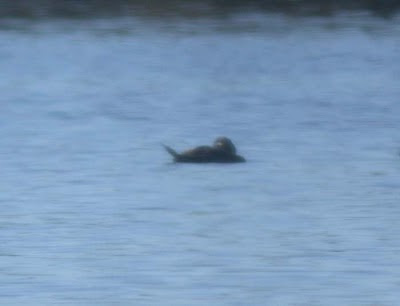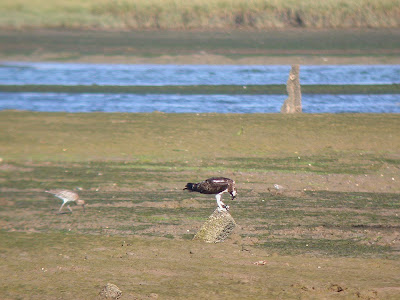
Looking out on the plain of the lower Alentejo - all turning green now.
So, what is there to tell about the recent Birding-Tours here in the Algarve and into the Alentejo ?
Well, a lot ! Bird life has been fabulous - plenty of birds and good species !
Yesterday, 25-11, during a Tour around Faro, both, Sacred Ibis (2 Ind.) and Glossy Ibis (1 Ind., very close views) could be observed, as well as Purple Swamphen and a late male Little Bittern (Ixobrychus minutus), Black-headed Weavers (Ploceus melanocephalus), Black-necked Grebe (Podiceps nigricollis), a couple of Common Shelduck (Tadorna tadorna) and various wintering Duck-species in large numbers were present. We also watched a flock of close to 1000 Black-tailed Godwits (Limosa limosa) feeding in a drained salt pan together with Pied Avocets and many other wader species. Among the birds of prey, Osprey (Pandion haliaetus), Marsh Harrier (Circus aeruginosus), 8 Booted Eagles (Aquila pennata) and a Black-winged Kite (Elanus caeruleus) could be added to the day list.
On Tuesday, the 23rd, we did a two and a half hours pelagic boat-trip out to the sea from Fuzeta (east Algarve). Despite the rainy weather (the boat has a cabin fortunately) it has been a successful Trip. We saw at least 50 European-Storm Petrels (Hydrobates pelagicus), 2 Balearic Shearwaters (Puffinus mauretanicus) lots of Great Skuas (Stercorarius skua)- at least 15 Ind, sometimes 5 around the boat at the same time, roughly 250 Northern Gannets (Morus bassanus) including many adults now, including 1 bird almost colliding with the boat when we approached a trawler about 6 Miles out... A new species for the year-list but not completely surprising, was a single Atlantik Puffin (Fratercula arctica) diving and then taking off close to the boat. We also saw a distant school of Dolphins (probably Common-) which we did not approach, because we were just "chasing" the seabirds at this moment, plus an Ocean Sunfish (Mola mola) next to the boat.
The day before, Monday, the 22nd of November, I went to the Baixo Alentejo with a party of people. We found all the main target-species during the morning, including several groups of Great Bustards (Otis tarda), a feeding flock of 70+ Little Bustards (tetrax tetrax), small groups of Black-bellied Sandgrouse (Pterocles orientalis) flying and a flock of around 100 Common Cranes (Grus grus). From a hillside, we spotted 14 Griffon Vultures soaring in a thermal at quite a distance - a rather late date for this species here. A single Black Vulture (Aegypius monachus) was with them and an adult Bonelli's Eagle (Aquila fasciata) also joined the soaring birds for a while.
Earlier in the morning, we had already watched a juvenile Spanish Imperial Eagle (Aquila adalberti) perched on a pile of stones, presumably his night-roost, with the telescope, as well as a Black-winged Kite (Elanus caeruleus) hovering next to the road.
On our way back, we stopped at a lagoon on the coast, where we had excellent views of Bluethroats (Lusciana svecica) and also saw various waders and other aquatic birds, including Glossy Ibis, as well as Caspian Tern (Sterna caspia) and Mediterranean Gull (Larus melanocephalus).
The Friday before (19th) I had been on a Alentejo-Tour already which has been just as good and also included all the main target species, with some slight differences. We did not get any Vultures, but observed two immature Spanish Imperial Eagles (Aquila adalberti) close together on the ground, where they were competing about a small carcase. One bird showing heavy moult in the primaries and the pale and streaked plumage on both indicated, that they were in their 2nd or 3rd year. Besides the numerous Red Kites (Milvus milvus) in the area, we also saw a juvenile Hen Harrier (Circus cyaneus) and observed a hunting Peregrine Falcon (Falco peregrinus) which caused quite a panic among the present Lapwings, Black-bellied Sandgrouses and Golden Plovers.
Recent sightings from the west-coast of Portugal suggest that we might get another good winter for North Atlantic Gulls and wintering Passerines here - Let's hope so !

Drake Teal (Anas crecca) almost in full breeding plumage. Faro, 23rd Nov 2010.

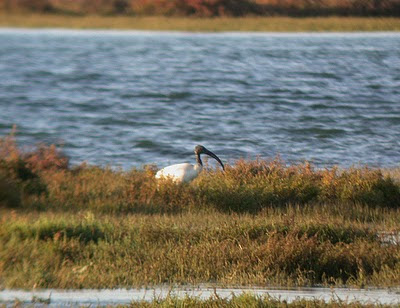
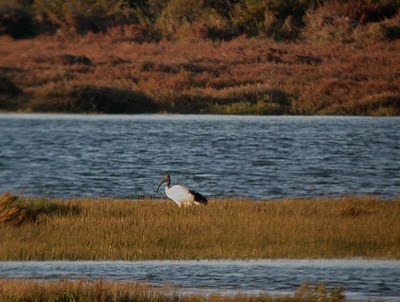

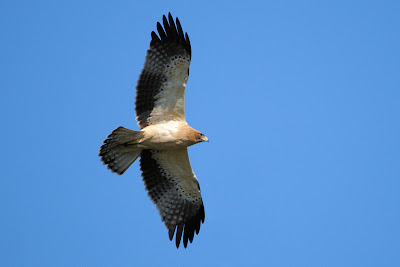cvr.jpg)
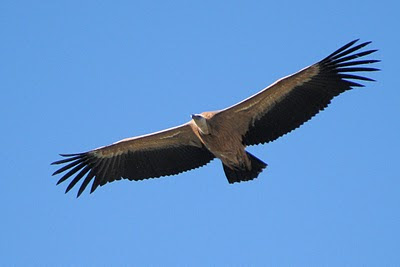cvr.jpg)

